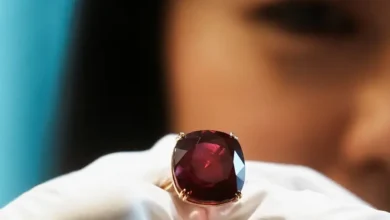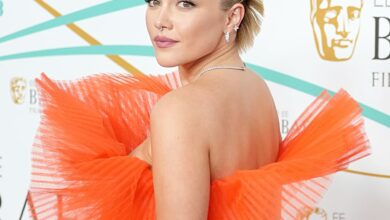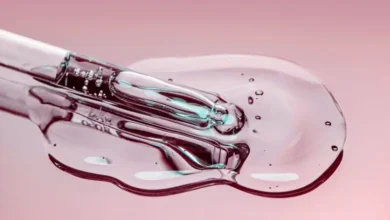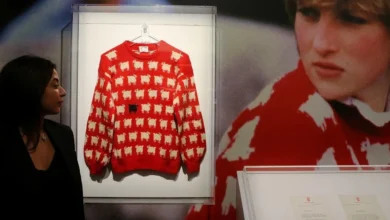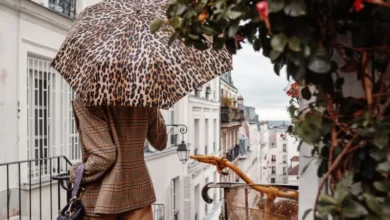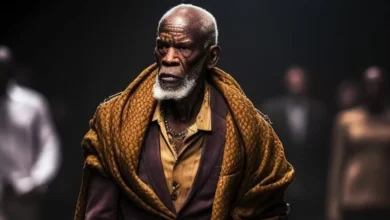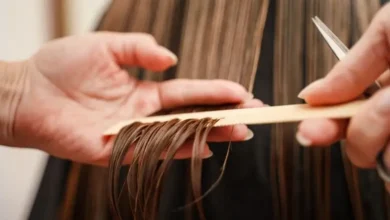Marilyn Monroe to Joan Crawford: Hollywood’s most stunning costume jewellery
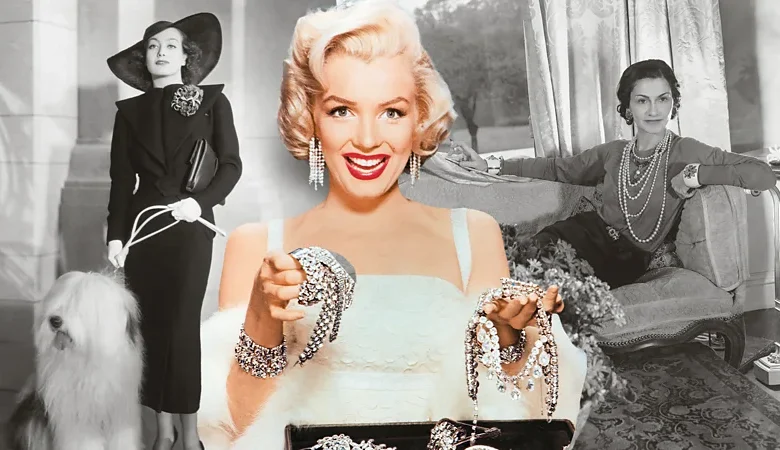
Featuring inexpensive materials and faux gems, these remarkable pieces of jewellery have been worn by the world’s most glamorous stars in the golden age of Hollywood – from Joan Crawford to Liberace. A new book explores the story of statement jewels.
We all know that a statement necklace, bangle or earrings can provide the finishing touch to an outfit, but it’s easy to forget that until costume jewellery appeared on the scene this was an option only available to those with healthy bank balances. Prior to this, “women were wearing fine jewellery or no jewellery,” says jewellery historian Carol Woolton, who has written the text for Costume Jewelry, a new illustrated Taschen book on the subject.
Costume jewellery – in other words, jewellery made with inexpensive materials or imitation gems – emerged because of multiple factors, notably World War Two’s impact on the availability of materials, and the changing position of women in society. And although instigated by European designers, it came into its own in the US.
“I think it was embraced much more in the States because you didn’t have that idea of heritage jewellery that was entrenched in Europe,” says Woolton. “European women were so used to wearing family jewellery or being gifted it on significant milestones in their life, but in America there was a freedom.”
Hollywood’s influence was immense. When film stars like Marilyn Monroe started wearing costume jewellery both onscreen and off, they transformed it into a highly desirable and affordable commodity that was worn by everyone from socialites to secretaries.
Here are nine of the most influential costume jewellery pieces and the designers who created them.
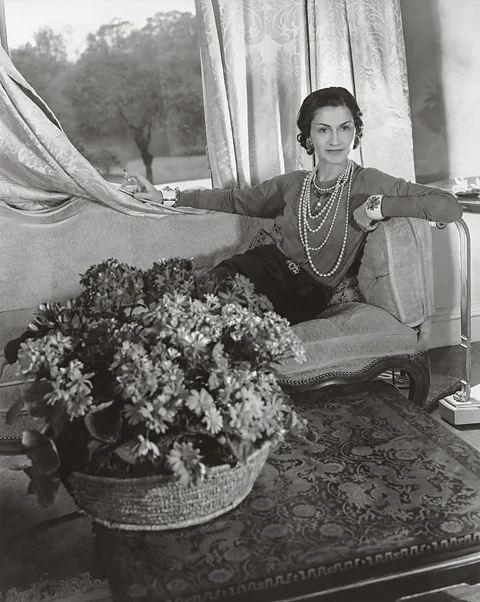
Chanel Maltese Cross cuff
Coco Chanel was one of the first designers to bring real artistry to costume jewellery. Chanel’s wholly unique and chic approach is evidenced in the iconic Maltese Cross cuffs she can be seen wearing in this image, in which precious stones were set in base metal covered in white enamel. “It’s hard to overestimate how radical it was at the time for Chanel to do what she did, using glass and gilt and mixing it with precious gemstones. Now the high-low fashion mix is commonplace, but back then it really wasn’t,” Woolton says.
Although Chanel liked to mix fine and faux jewels in her own outfits, the pieces she sold were pure costume jewellery, which gave her the freedom to experiment with colours and materials. She was “making jewellery that wasn’t a pastiche of fine jewellery but something really beautiful in its own right”, says Woolton. Strands of fake pearls and bold, brightly coloured pieces made from gilded metal, glass paste and beads were the perfect accompaniment to her elegantly refined clothes, including her signature little black dress.
“Her idea was that fine jewellery shouldn’t be about value or wealth or, as she famously said, ‘wearing a cheque around your neck.’ It was about completing the costume and making a woman feel beautiful,” says Woolton.
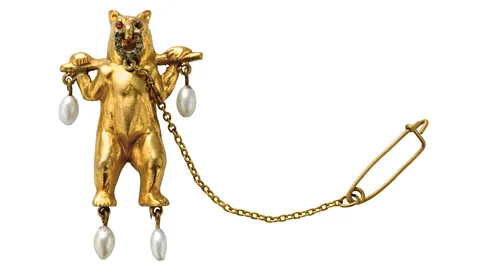 Courtesy of William Wain
Courtesy of William WainElsa Schiaparelli faux-pearl pin
Equally important was Elsa Schiaparelli. “Schiaparelli came at it from a very different point of view – she made it an art form, and would work with different artists such as Jean Schlumberger and Salvador Dali,” Woolton says. Schlumberger, who would later go on to work for Tiffany, was responsible for the quirky gilded metal and faux pearl pin seen here.
With Schiaparelli, “there was no design, no material that couldn’t be used,” says Woolton. Everything from shells and fir cones to ostrich feathers and roller skates were transformed into eye-catching adornments. “There was a much more artistic thought process behind it, working with artists to get their take on what jewellery could be,” says Woolton.
Both Chanel and Schiaparelli “were creating something that didn’t previously exist”, emphasises Woolton, and in the process making a form of jewellery that was accessible to a much wider demographic.
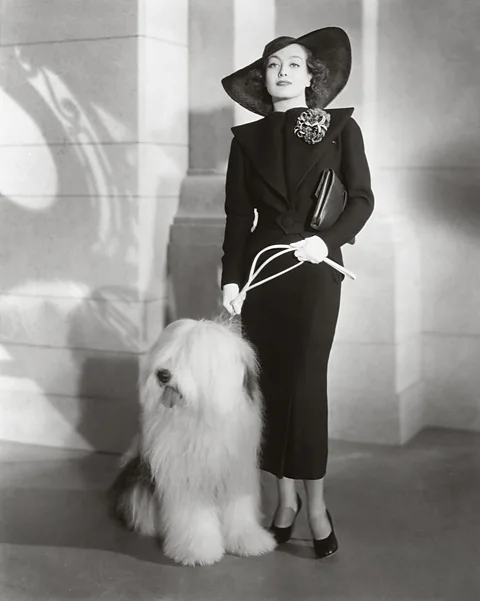
Miriam Haskell crystal brooch
Miriam Haskell produced some of the finest costume jewellery ever made. She had decided early in her career that there was no reason costume jewellery couldn’t be produced with the same level of skill and sophistication as couture, and she employed highly skilled European craftsmen to create pieces featuring elaborate filigree and refined beadwork.
Her exquisite designs found favour with Hollywood stars, especially Joan Crawford, who wore Haskell’s designs on screen and off, and even modelled for her advertising campaigns. Her jewellery also appeared in films such as Ziegfeld Follies (1945) and Phantom of the Opera (1943), as well as episodes of I Love Lucy.
The Hollywood connection added to her appeal among the general public, and she would become the first costume jewellery designer to have front-of-store outlets at both Saks Fifth Avenue and Harvey Nichols.
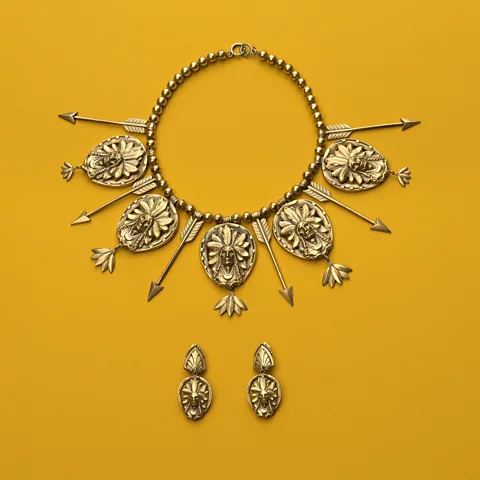
Joseff of Hollywood matte-metal necklace
Perhaps no jewellery designer is as synonymous with Tinseltown as Joseff of Hollywood. Eugene Joseff’s journey to the top began when he pointed out to his friend, the costume designer Walter Plunkett, that much of the jewellery seen on screen was historically inaccurate. When Plunkett challenged him to create something better, the results were clearly impressive as Joseff soon became the go-to costume jewellery designer for all the major studios. A Star is Born (1937), Gone with the Wind (1939) and Ben-Hur (1959) are just some of the classic films that featured his jewels. Leading ladies including Marlene Dietrich, Greta Garbo and Vivien Leigh often wore them off screen, too.
Attuned to what worked on the silver screen, Joseff created a matte metal for his pieces which ensured they wouldn’t glare under studio lighting. Drawing on a vast array of reference books, he also skilfully simplified historic styles in order to distil the essence of an era for audiences who wouldn’t focus on fine details.
“Part of the reason he was so successful was that he was leasing the jewellery, not selling it, to the studios,” Woolton tells the BBC. This enabled him to build up a vast archive of pieces that he could rehire to different films. Having realised that women yearned to wear the jewels they saw their icons wearing on screen, he was also able to draw on this archive to make copies of his pieces that he then sold through department stores, such as this Indian-inspired necklace made in his custom matte metal finish.
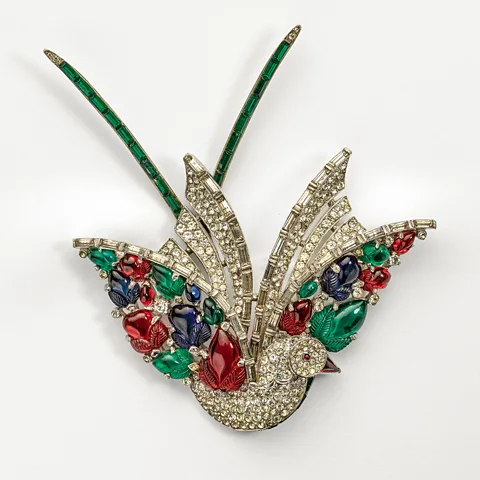
Trifari bird-of-paradise pin
For Woolton, Trifari is the most innovative of all costume jewellery designers because of the breadth of his work. “It’s so extraordinary, the pieces are so beautiful and so different.”
Trifari’s reputation is in no small part down to his Parisian-born head designer, Alfred Philippe, who had previously worked for fine jewellers. Philippe’s training resulted in stunning pieces, notable for their elaborate designs and meticulous craftsmanship, such as this Fruit Salad bird-of-paradise pin.
The “fruit salad” style had been popularised by Cartier, who used diamonds, emeralds and rubies in his Western take on Mogul jewellery. Trifari made it somewhat more affordable with coloured glass and rhinestones.
Trifari also led the way in the use of unusual materials such as Lucite, a clear acrylic resin used in aircraft windows that could be moulded under heat and pressure, and that gleamed like moonstone. He used it as the basis for his “jelly bellies” – a range of cute creatures with transparent bodies and jewel-encrusted heads and limbs which were soon copied by other designers.
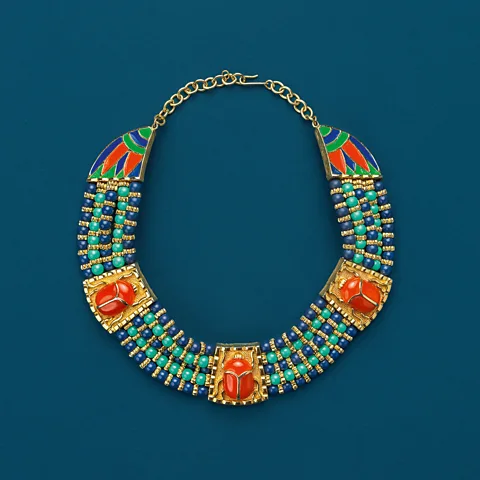
Hattie Carnegie scarab necklace
Hattie Carnegie was born Hattie Kanengeiser in Austria, and emigrated to New York with her family in 1900. Her new surname was inspired by Andrew Carnegie, the industrialist who was then one of the richest men in America. While she never achieved his phenomenal level of wealth, she did become a hugely successful fashion designer by skilfully adapting Parisian styles for the lifestyles and tastes of American women.
From the 1930s, she began creating colourful costume jewellery, much of which had a bold, stylised look inspired by the African art that she had noticed was all the rage among Parisian designers at the time. Bracelets and pins featuring colourful, quirky animals and sea creatures made of Bakelite or semi-precious stones embellished with rhinestones were also popular among her clientele, which included the film stars Tallulah Bankhead, Jean Fontaine and Norma Shearer as well as high-society figures such as the Duchess of Windsor and Baroness de Rothschild.
Although Carnegie died in 1956, her business continued until the 1970s when this Egyptian-inspired piece was made.
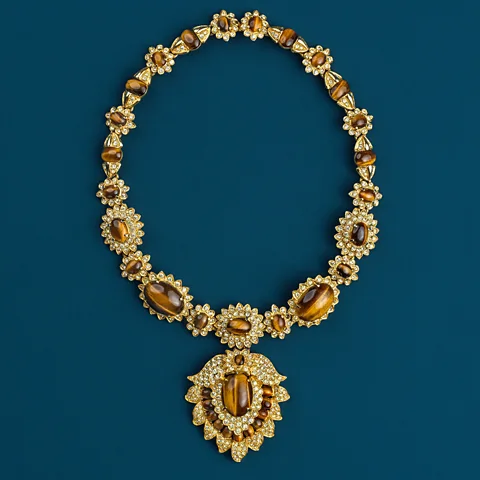
Kenneth Jay Lane ‘Jackie O’ pendant necklace
Arguably the most famous of all costume jewellers, Kenneth Jay Lane had a celebrity client list to die for. Audrey Hepburn, Diana Vreeland and the Duchess of Windsor all wore his jewellery. “Jacqeline Kennedy Onassis loved getting his pieces and sent him thank you notes,” says Woolton. “Even Princess Margaret used to swan off to Mustique with her Kenneth Jay Lanes.” Clearly these were women who could afford real diamonds and pearls, but “women who bought Van Cleef and Harry Winston were also buying Kenny because it was amusing”, explains Woolton.
His success was as much down to his charm as his jewellery. “He was incredibly witty and good-looking, and he became very well connected. He mixed with high society, and all these women adored him,” Woolton says. “He’d note what they wore and copy it and was totally unapologetic about it.” The fact that he cheekily called his autobiography Fabulous Fakes is evidence of that, as is the necklace seen here, which is a copy of one originally owned by Jacqueline Kennedy Onassis. Contemporary stars including Lady Gaga and Katy Perry continue to be drawn to his work.
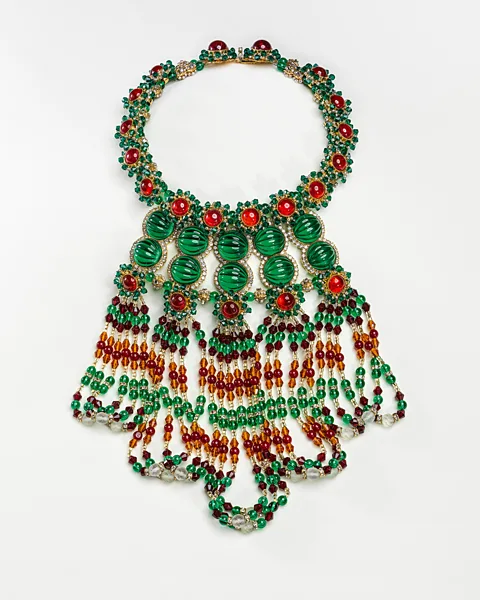
William de Lillo beaded fringe necklace
The Belgian-born William de Lillo worked at Tiffany, Cartier and Harry Winston in New York before teaming up with Miriam Haskell’s former head designer, Robert F Clark, in 1967. De Lillo’s early work – which included bold, beautiful pieces using colourful beads and rhodium-plated brass enhanced with fringes and tassels – was created in response to the counter-cultural movement then sweeping through America. Often aimed at men as well as women, his range included golden dog collars and chains to be worn in lieu of ties.
De Lillo was influenced by the fine jewellery of Jean Schlumberger, and made use of sumptuous materials including angel skin coral, turquoise, pearls, lapis lazuli, rhinestones, and jade. He’d go on to create catwalk pieces for US couturiers such as Bill Blass and Norman Norrell, and eventually caught the eye of high society. For a time, he moved into creating exclusive pieces, such as this exquisite Mogul-inspired beaded fringe necklace, for wealthy women. His client list included Baroness de Rothschild, the Duchess of Windsor and Elizabeth Taylor.
In 1976, De Lillo and Clark moved to France, and De Lillo designed for costume jewel pioneers Chanel and Schiaparelli, as well as Nina Ricci and Yves Saint Laurent.
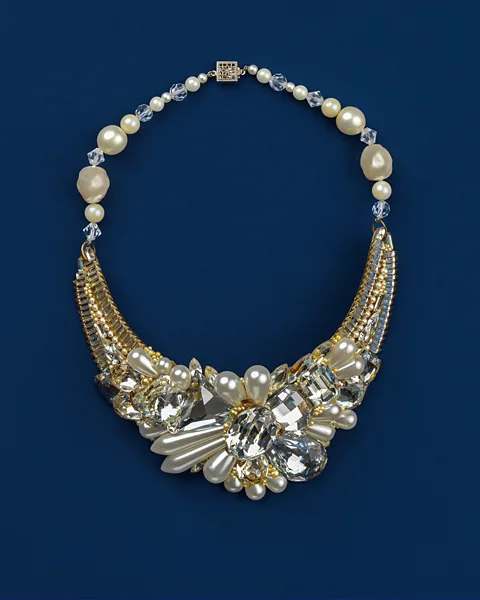
Wendy Gell pearl-and-crystal wedding necklace
Wendy Gell’s route to costume jewellery design was vastly different to her predecessors’.
While working as a song writer in the early 1970s, she started looking for another creative way to make a living and came up with the idea of the “Wristy” cuff bracelet. Embellished with everything from vintage porcelain figures to fake pearls and crystals, these whimsical creations quickly gained popularity.
She went on to design catwalk pieces for Oscar de la Renta and Louis Dell’Olio before signing a contract with Disney to create a line of cartoon-character pieces including Roger Rabbit for Saks Fifth Avenue.
Gell’s bold, brash aesthetic was perfectly suited to the 1980s and her one-of-a-kind pieces were collected by celebrities known for their outlandish style choices, including Elizabeth Taylor, Cher, Liberace, Elton John and Prince.
